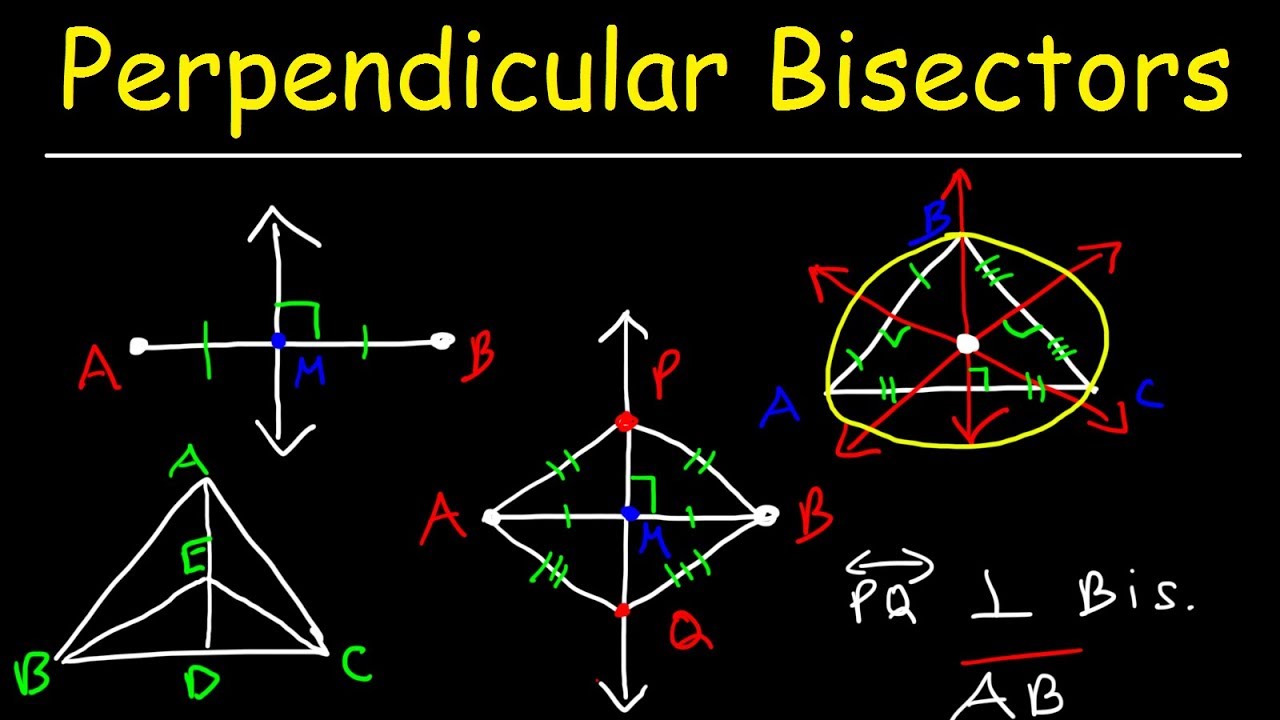When two lines intersect each other at the right angle then we say they are perpendicular to each other A bisector, on the other hand, is a line that splits a line into two equal sections. A perpendicular bisector of a line segment CD intersects CD at 90 degrees and divides it into two equal sections.
According to the perpendicular bisector theorem, any point on the perpendicular bisector is equidistant from both endpoints of the line segment on which it is drawn. All of the pillar’s points will be equidistant from the bridge’s endpoints if it stands at an angle in the middle of the bridge
A perpendicular bisector is a line that, throughout the junction point, bisects another line segment at a right angle. A perpendicular bisector, thus, always divides a line segment through its center. Bisect means to divide evenly or uniformly.
Properties of a Perpendicular Bisector
- It bisects or divides PQ into two equal parts.
- It forms a 90-degree angle with (or is perpendicular to) PQ.
- In the perpendicular bisector, every point is equidistant between points P and Q.
Constructing a Perpendicular Bisector
When working with practical geometry, you’ll frequently come across the use of perpendicular bisectors, such as when drawing an isosceles triangle or determining the center of a circle. The procedures for making a perpendicular bisector of a line with a compass and a ruler are explained below.
How to Construct a Perpendicular Bisector?
To construct a perpendicular bisector, all you need is a ruler and compass
- First, start with drawing a line segment MN.
- The compass should be set to a length a little longer than the length of MN.
- Draw arcs above and below the line with the compass pointer at point M.
- Place the compass pointer at point N while maintaining the same length in the compass.
- Similarly, while maintaining the compass pointer at N, draw two arcs above and below the line.
- Label A and B the spots where the opposite arcs cross.
- With a ruler, draw a line between A and B.
The perpendicular bisector bisects MN at point O, so the length MO is equal to ON. This means that the angle between the two lines is 90 degrees.
Examples
Example: If a perpendicular bisector is drawn to a line segment with a length of 7 cm. How much does each line segment measure?
Solution: A perpendicular bisector intersects a line segment at a right angle and divides it into two equal portions(by definition)
As a result, the length of each segment of the line segment (7 cm) bisected by a perpendicular is 3.5 cm.
Perpendicular Bisector of Triangles
A triangle’s perpendicular bisector is a line segment traced from a vertex to the opposite side at a right angle, bisecting the side. A triangle’s perpendicular runs perpendicular to the sides drawn from the opposite vertices and divides the sides into two equal pieces. The circumcenter of a triangle is defined as the place where the three perpendicular bisectors of the triangle meet.
Cuemath
Math is usually regarded as a topic in which children have little interest. Many kids are not interested in mathematics because they believe it is difficult. Math, on the other hand, is an important subject. It helps students improve their problem-solving and thinking skills. This is where online maths classes come into the picture. Students will benefits much from online math programs as they can learn at their own pace and take as much time as they need to understand a concept. Cuemath online classes are one of a kind. The main purpose of Cuemath is to provide outstanding after-school teaching and help your youngster to develop a passion for their careers, visit website and book a free session.
